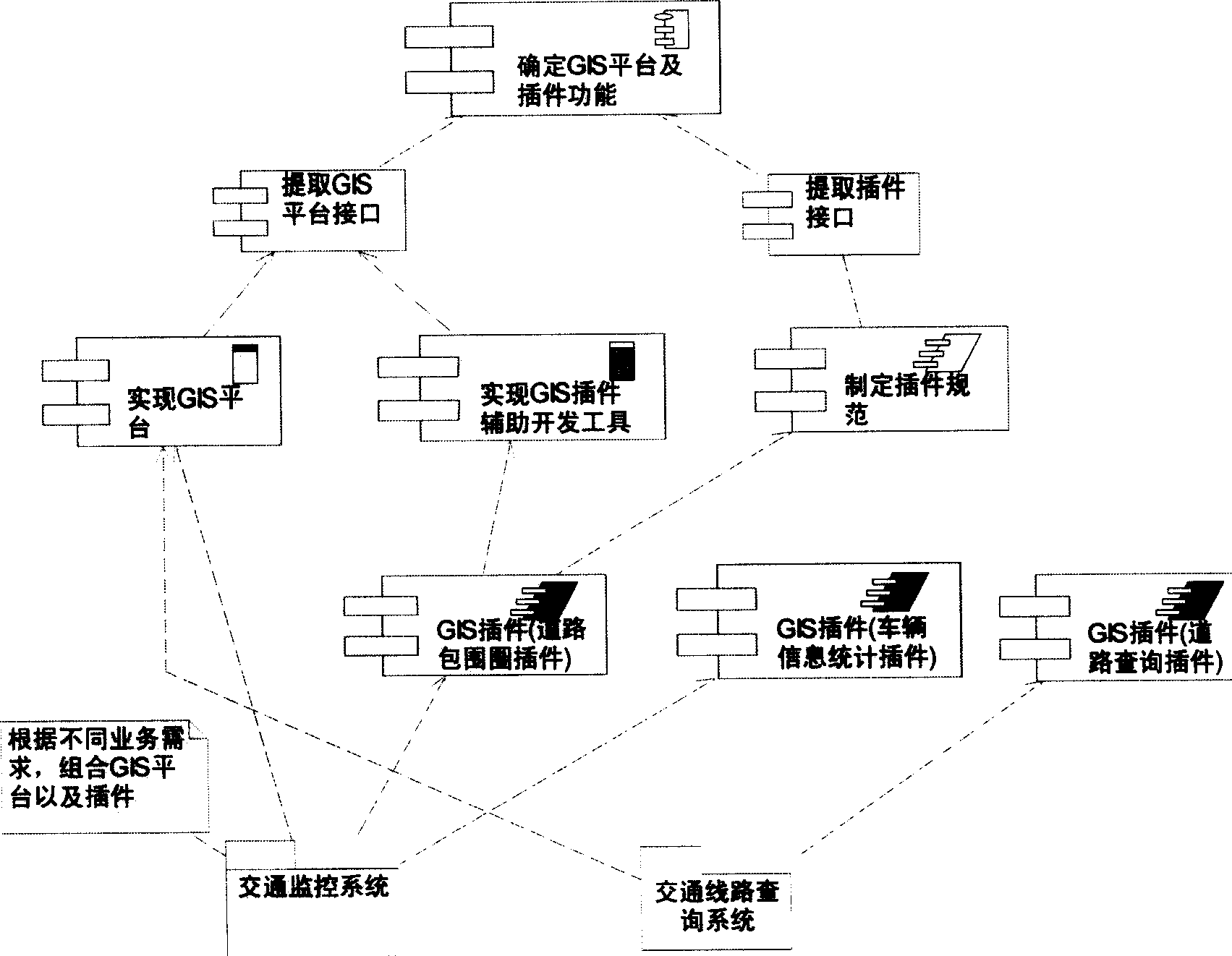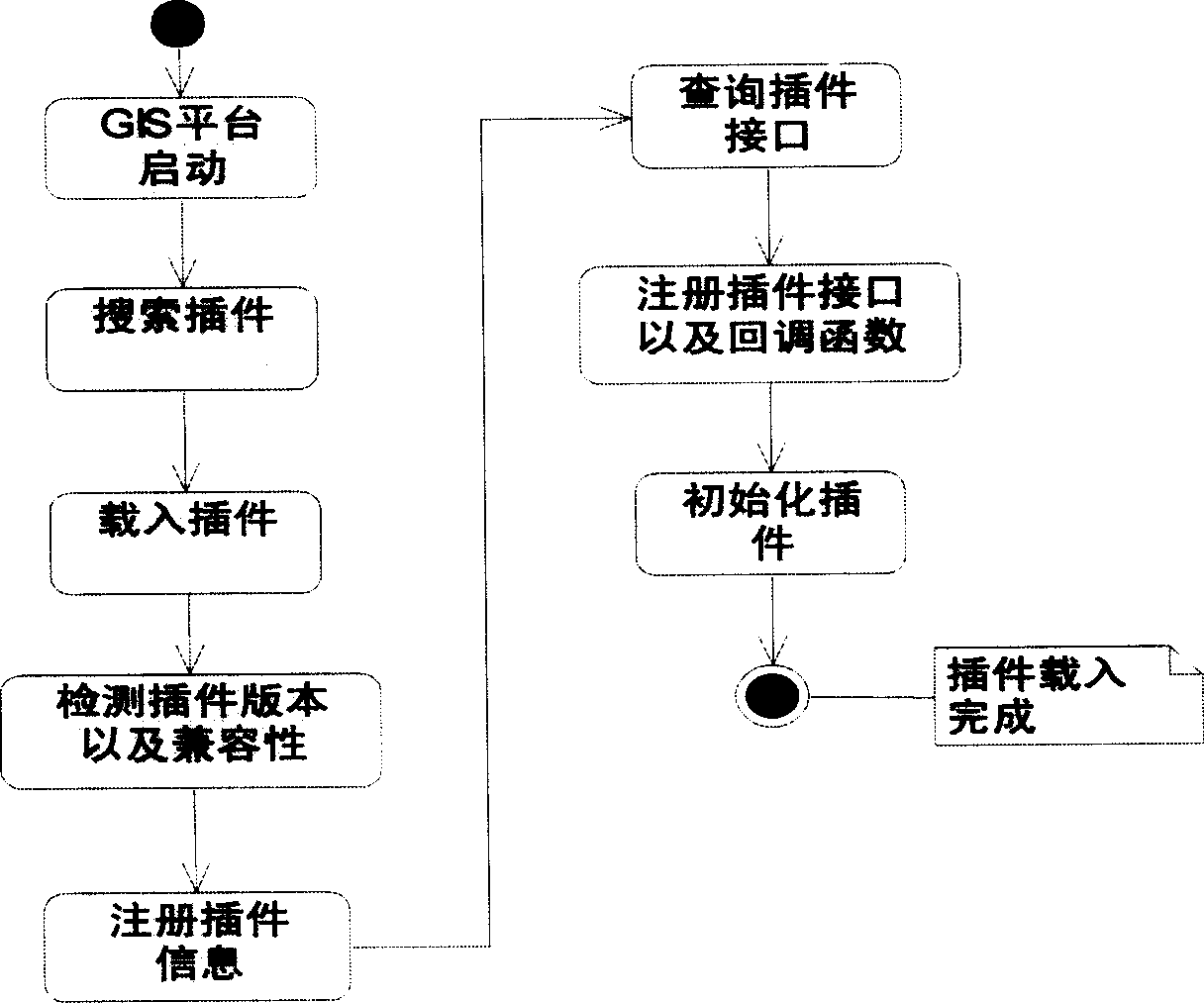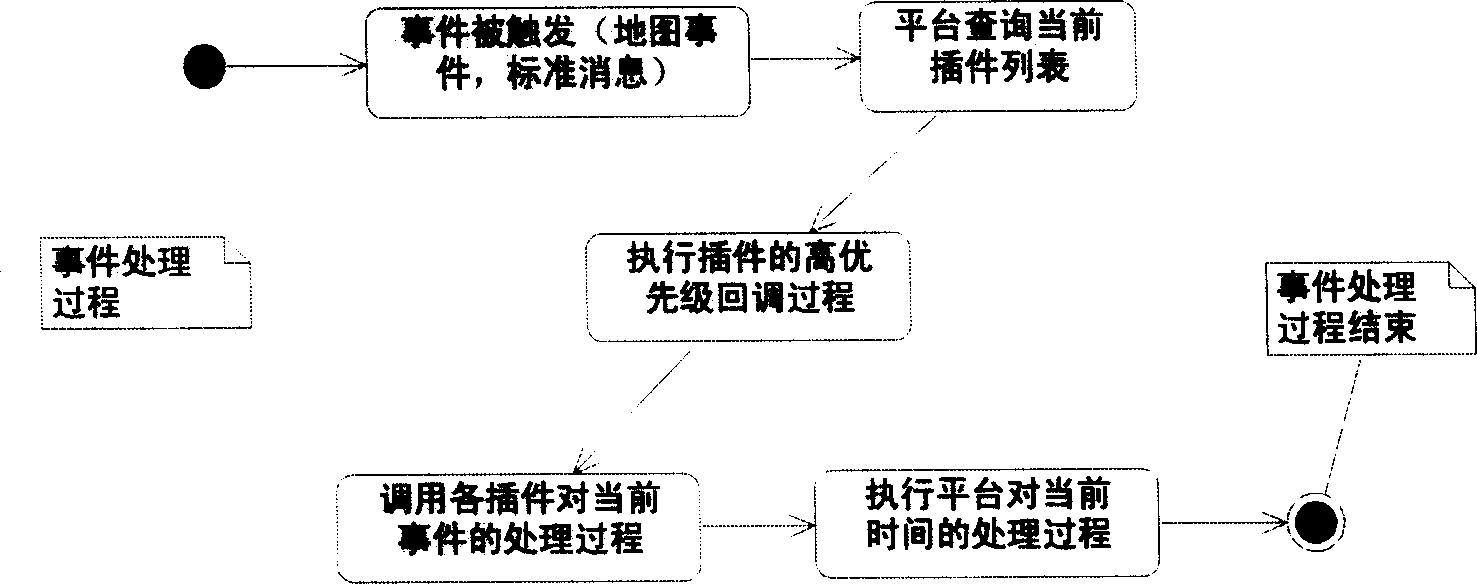GIS application system and development method thereof
An application system and plug-in technology, applied in the direction of program control devices, etc., can solve problems such as troublesome and aggravate software systems, and achieve the effect of shortening the development and maintenance cycle
- Summary
- Abstract
- Description
- Claims
- Application Information
AI Technical Summary
Problems solved by technology
Method used
Image
Examples
Embodiment Construction
[0027] The GIS application system of the present invention is divided into three parts: GIS platform, plug-in and application system interface.
[0028] 1. GIS platform
[0029] The GIS platform realizes the core functions of the GIS application system, and at the same time has the function of invoking, managing and coordinating external plug-ins, and has the function of transmitting standard messages and events to external plug-ins.
[0030] 2. A plug-in, which performs a specific function.
[0031] 3. GIS system interface
[0032] The GIS system interface includes two standard interfaces, one is the platform interface implemented by the GIS platform, and the other is the plug-in interface implemented by the plug-in.
[0033] The platform interface is completely implemented by the platform, and the plug-in is just called and used. The platform interface realizes one-way communication from the plug-in to the platform. The plug-in can obtain various resources and data of the...
PUM
 Login to View More
Login to View More Abstract
Description
Claims
Application Information
 Login to View More
Login to View More - R&D
- Intellectual Property
- Life Sciences
- Materials
- Tech Scout
- Unparalleled Data Quality
- Higher Quality Content
- 60% Fewer Hallucinations
Browse by: Latest US Patents, China's latest patents, Technical Efficacy Thesaurus, Application Domain, Technology Topic, Popular Technical Reports.
© 2025 PatSnap. All rights reserved.Legal|Privacy policy|Modern Slavery Act Transparency Statement|Sitemap|About US| Contact US: help@patsnap.com



